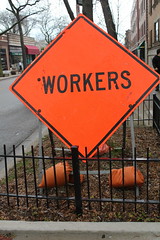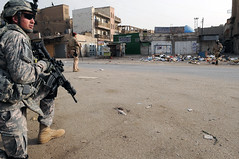
Pair the following questions and activity with the article Explaining and Eliminating Racial Profiling by Donald Tomaskovic-Devey and Patricia Warren in the Spring 2009 issue of Contexts.
You (and your students) can read the full text online on contexts.org!
1) Do you think racial profiling is a problem in your area? Have you witnessed or experienced what you would consider racial profiling?
2) How are systematic, individual, and unconscious bias related? Is one type more damaging than another? Use an example other than racial profiling to discuss how all three types of bias can work.
3) Based on what you learned, how can sociological research help reduce racial profiling?
ACTIVITY: Imagine you are the chief of police. Design a five-point program your department can implement to combat racial profiling.



 Prostitution is one of those topics that incites very strong reactions–making it very difficult to discuss in the classroom. In the
Prostitution is one of those topics that incites very strong reactions–making it very difficult to discuss in the classroom. In the 



